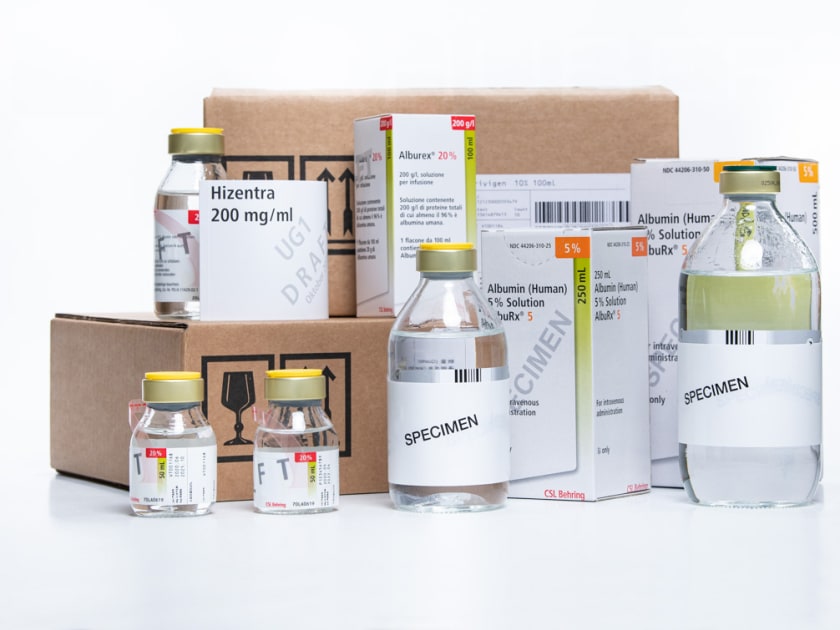After autoclaving, the second step is to depalletise the sterilisation trays and prepare them for product removal. The BFS blocks are taken out of the trays row by row and placed directly into the separating station. The separator tool separates the vials from the blocks using a shearing motion that is designed for careful product handling. This removes the danger of tearing a vial during the separation process. A second F2 robot takes the separated products as they come out of the separating station.
Besides the careful separation process, what is special about this stage of the process is that the products are placed headfirst in product carriers, known as PUKs. The "empty status" of the trays is checked using sensors, and the trays are palletised for reuse. A complete autoclave batch can be handled in the pallet infeed and discharge preparation zone.
In two downstream intermediate steps, the products are seals are checked (vacuum check) and then fitted with a shrink-wrap sleeve.












